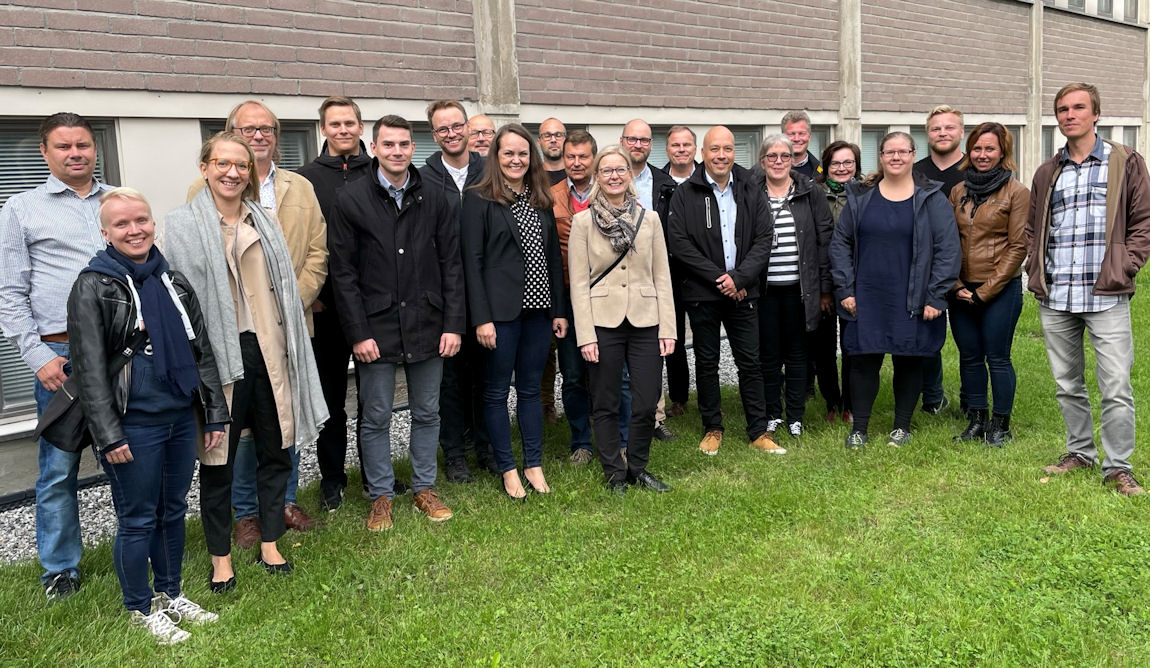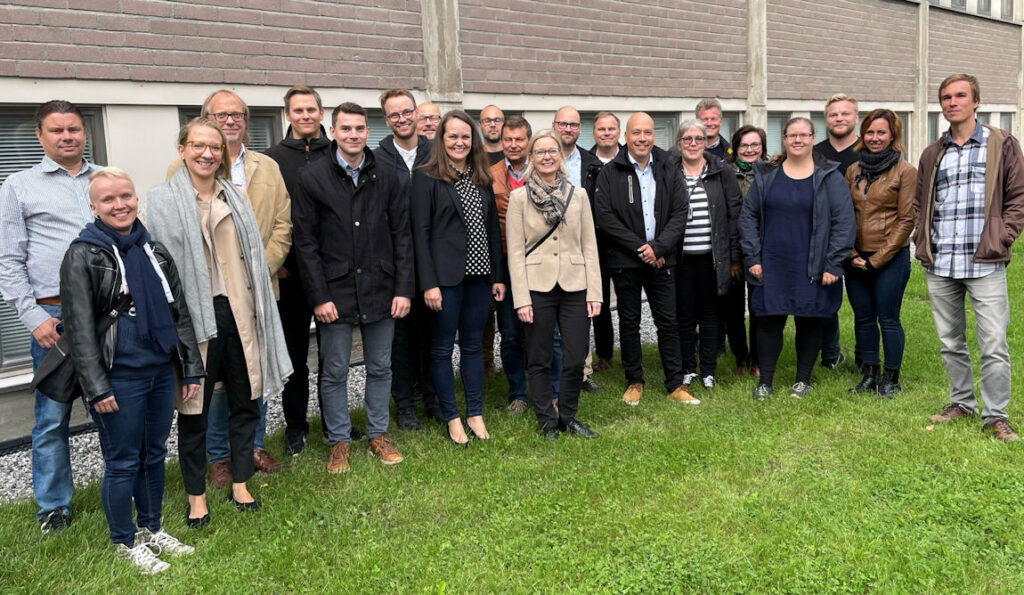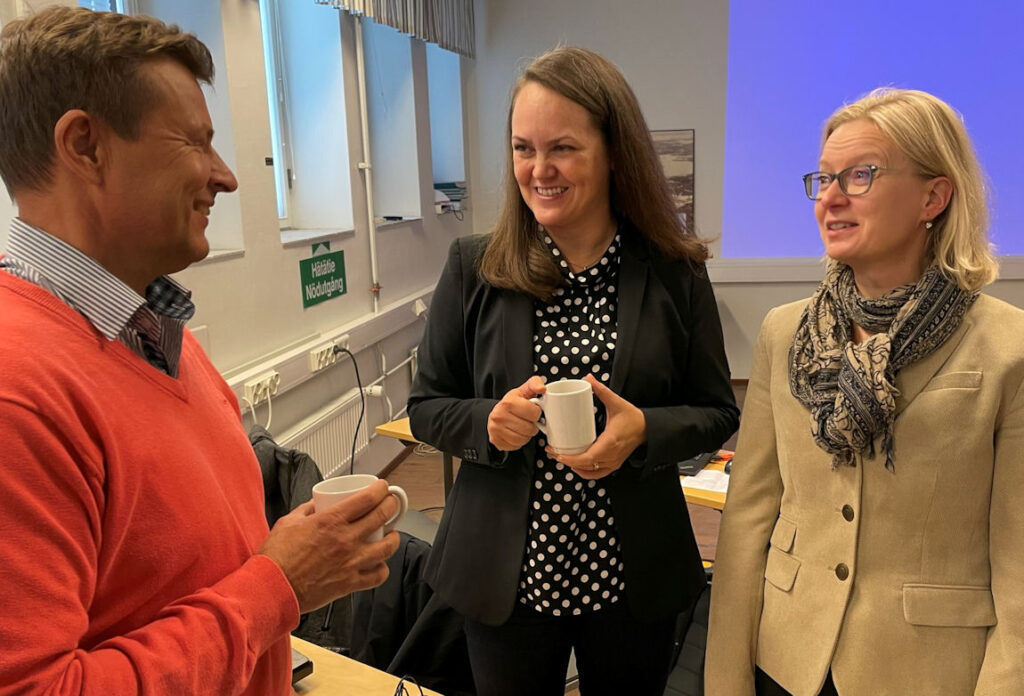
There are many opportunities in the construction industry to promote circular economy and low carbon activities. Construction industry actors of the 3C cluster in Southwest Finland gathered to present new products and ongoing development projects at a seminar in Pargas on 20 September 2022. The event was hosted by Turku Science Park and Nordkalk.
“Have you read my email describing the qualities of our filter slabs”, asks Ismo Kuokkanen, Department Manager, Process R&D at Paroc Group. Ursula Kääntee, Head of Sustainable Development at Finnsementti Oy, replies: yes, she has read the email in which filter plate waste is offered to the cement producer for utilisation, but “the high energy intensity of the plates sounds too good to be true”.
Ursula Kääntee is constantly looking for circular raw materials that are suitable for cement production. The material must meet the quality requirements and function both as alternative raw material and alternative fuel in the coprocessing system of the clinker kiln. For example, tire grit and used roofing felt fit the description and enable Finnsementti to reduce its carbon footprint.
The filter slab waste offered by Paroc, an expert in stone wool products, might well be suitable for Finnsementti’s needs. If so, it would also help Ismo Kuokkanen in his search for solutions to eliminate all waste ending up in a landfill from the plant – a target set for 2025.
This was one of the discussions that took place in the seminar Circular economy and low carbon in the construction industry, organised by the 3C cluster (Circular Materials and Solutions for Construction Industry), the task of which is to promote business operations based on circular economy in construction in the Turku region in Finland. The seminar gathered construction and circular economy experts from companies, institutes of higher education, and from the public sector to share challenges, experiences, and ideas. In the heart of 3C is to pilot the best ideas and eventually develop new circular products, services, and business models.
Concrete steps forward
The 3C cluster was founded in 2020, when the pandemic forced networking to take place online. After a string of seven webinars, the seminar in Pargas was the first one where the participants were able to meet in the same room. With 30 people present, the atmosphere was joyful.

As expected, smiling faces were seen when the 3C cluster participants finally had a chance to meet in person.
“It’s lovely to see people face to face”, summarises Reeta Huhtinen, Network Manager for CleanTurku at Turku Science Park. She is pleased to hear the presentations showing that “circular economy is not just a topic for discussion, but companies are actively developing real solutions.”
Nordkalk’s R&D Director Mathias Snåre agrees: there has been progress both in the 3C cooperation and in product development. At Nordkalk, at least 80 percent of the R&D work concentrates on circular economy. It is a strategic focus area for the limestone company and a part of all customer segments.
One example of a co-operation test within the 3C cluster is the utilisation of Nordkalk’s crushed wall rock in the dry concrete of Saint-Gobain Finland Oy, to replace natural sand.
Finnsementti’s newish CEM III cement, which contains blast furnace slag, received praise at the seminar. It has enabled the Turku-based concrete company Betonilaatta Oy to reduce the carbon footprint of some of its products by 40 percent. Nordkalk has also been using CEM III since this spring, when it replaced traditional cement in the soil stabilisation products.

Ismo Kuokkanen (Paroc), Annica Lindfors (Nordkalk) and Reeta Huhtinen (Turku Science Park) discussed during the coffee break.
Carbon footprint to become part of construction permit
The biggest challenge in circular economy is financial profitability. Circular solutions are usually started with small production volumes, which often results in a higher per-unit price than that of a traditional product, while customers expect a lower price. Additional challenges include the availability of raw material, quality specifications and related legal concerns, as well as the development of production technologies.
The built environment plays a crucial role in the mitigation of climate change. Low carbon construction is encouraged by law as well: according to the road map put forth by the Finnish Ministry of the Environment, starting from 2025, CO2 emissions will be a consideration when building permits are issued.
Other interesting projects:
Photos and text: Anne Foley
We use cookies to give you the best internet experience. By giving consent, you accept the use of cookies in accordance with our cookie policy.

When you visit any web site, it may store or retrieve information on your browser, mostly in the form of cookies. Control your personal Cookie Services here.